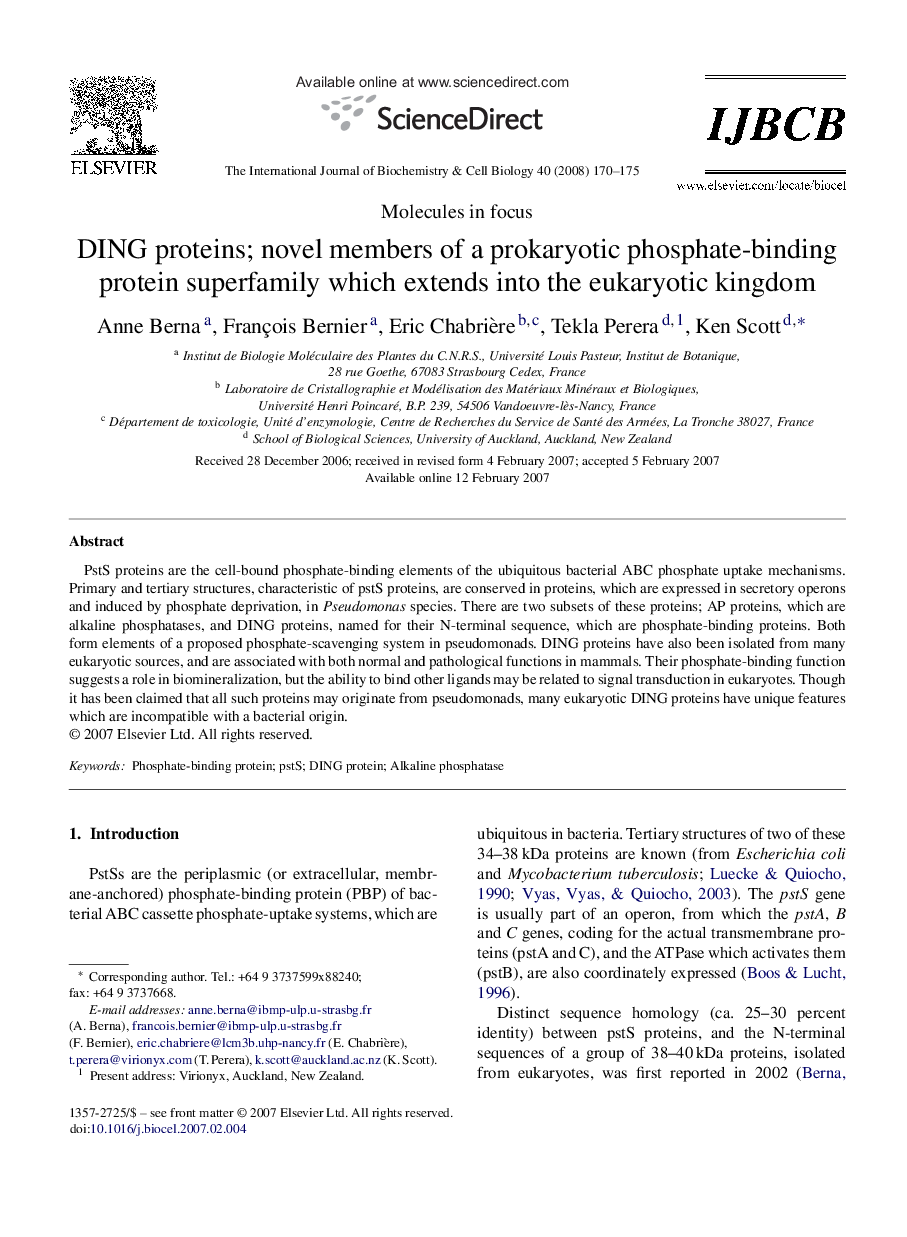| Article ID | Journal | Published Year | Pages | File Type |
|---|---|---|---|---|
| 1984978 | The International Journal of Biochemistry & Cell Biology | 2008 | 6 Pages |
PstS proteins are the cell-bound phosphate-binding elements of the ubiquitous bacterial ABC phosphate uptake mechanisms. Primary and tertiary structures, characteristic of pstS proteins, are conserved in proteins, which are expressed in secretory operons and induced by phosphate deprivation, in Pseudomonas species. There are two subsets of these proteins; AP proteins, which are alkaline phosphatases, and DING proteins, named for their N-terminal sequence, which are phosphate-binding proteins. Both form elements of a proposed phosphate-scavenging system in pseudomonads. DING proteins have also been isolated from many eukaryotic sources, and are associated with both normal and pathological functions in mammals. Their phosphate-binding function suggests a role in biomineralization, but the ability to bind other ligands may be related to signal transduction in eukaryotes. Though it has been claimed that all such proteins may originate from pseudomonads, many eukaryotic DING proteins have unique features which are incompatible with a bacterial origin.
